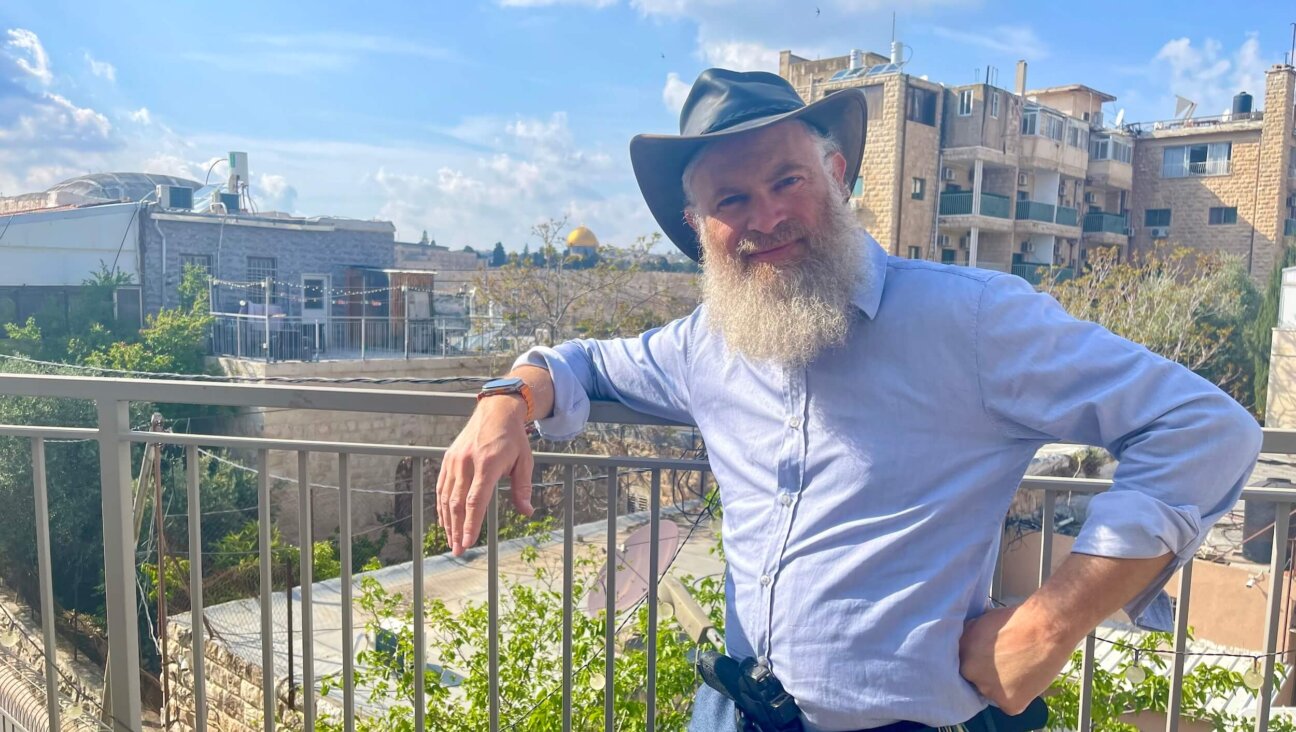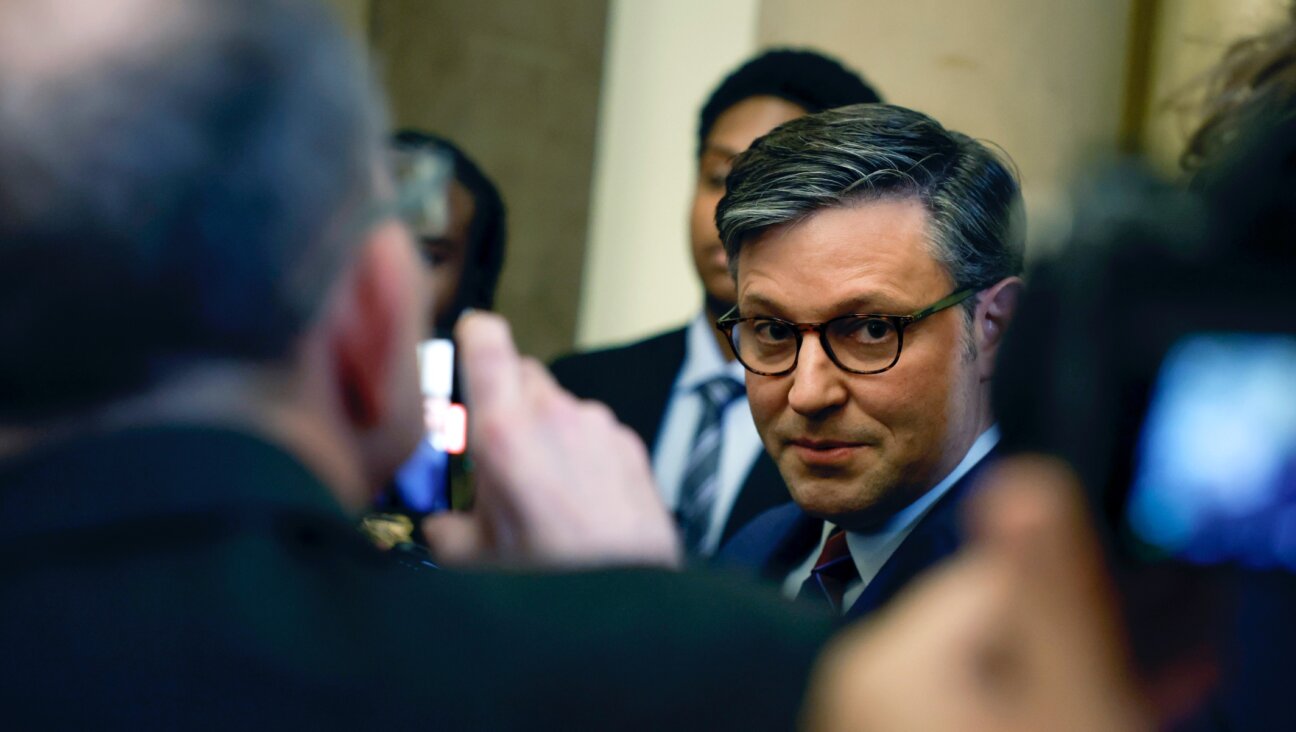Few Large Donations Go to Jewish Causes
Jewish philanthropists may be more generous than other Americans at cutting supersized checks to charities, according to a new study, but they give mere pennies on the dollar of their largest donations to Jewish causes.
The study, titled Mega-Gifts in American Philanthropy, found that among the 865 Americans who awarded a single grant of $10 million or more to charities between 1995 and 2000, a disproportionately large number — 22% — were Jews. But Jewish donors gave less than 10% of their gifts of $10 million or more to Jewish institutions, according to the report, which was released last week.
“While Jews are remarkably generous givers, few Jewish mega-gifts, gifts of $10 million or more, go to the Jewish community,” says the study, the first-ever examination of the giving patterns of the Jewish community’s most robust donors. The report was co-authored by sociologist Gary Tobin, philanthropy expert Jeffrey Solomon and the CEO of Jewish Philanthropy Partnership, Alex Karp. The research was conducted by Tobin’s organization, the Institute for Jewish & Community Research in San Francisco.
Observers in the philanthropic and Jewish communal worlds say the authors’ conclusion is in line with their own anecdotal findings. But the study has nevertheless touched off, or perhaps reawakened, a debate among Jewish sociologists and religious leaders over what causes the dearth of high-end giving to Jewish institutions and what, if anything, should be done to reverse it.
The debate hinges on whether the disconnect between Jewish mega-donors and Jewish communal institutions stems from the giver, with catalysts such as assimilation playing a role, or whether the onus lies with the Jewish not-for-profit world, which some see as either structurally deficient or overly insular.
The study itself does not offer explanations for the trends and gives few concrete recommendations to reroute these giving patterns. Tobin said his team is conducting interviews with the so-called mega donors and is analyzing the study’s data to answer those questions.
Solomon, president of the Andrea and Charles Bronfman Philanthropies, said one problem could be that Jewish institutions are not designed to capture higher-end donations. When it comes to seeking high-end gifts for Jewish communal needs, Solomon posed a basic question: “Are we asking?”
Tobin’s assessment of Jewish mega-giving patterns is that Jewish institutions could do a better job of presenting themselves to larger donors as more efficient, donor-friendly and relevant.
“I don’t know if [Jewish institutions] have a bad name,” Tobin said. “But they may not have a high-quality enough name to garner $50 million gifts.” The key, he said, “is assuring the donors that our current institutions are capable of properly utilizing large gifts in terms of quality programs, efficiency of delivery and solving problems of Jewish life. That’s the disconnect.”
But another scholar of Jewish philanthropy disagreed in strong terms with Tobin’s reasoning. “That’s in essence blaming the victim,” said Jack Wertheimer, provost and professor of American Jewish history at the Conservative movement-affiliated Jewish Theological Seminary.
Wertheimer said Jewish institutions are not being locked out of major giving because of flaws within their own fundraising mechanisms, but because of weakness in the donors’ Jewish identity. Among the problems, he said, are a high rate of intermarriage, American Jews’ “miseducation” or misconceptions about the needs of the Jewish community in areas of education and culture and what he called “the dead-end nature of tikkun olam ideology,” using the Hebrew term for “healing the world.”
“A great amount of American Jews have felt that any giving is Jewish giving — and they’ve been taught to believe that by their rabbis and religious teachers,” Wertheimer said. “Many donors are convinced that no matter how they direct their funds, they are engaged in Jewish philanthropy. That is a misunderstanding of the basic Jewish teachings about our special responsibility toward fellow Jews.”
Wertheimer’s view, in turn, drew an impassioned dissent from Rabbi Irwin Kula, president of CLAL, the National Jewish Center for Learning and Leadership. “The words dead-end and tikkun olam are obscene together,” said Kula, who received his ordination at Wertheimer’s JTS. “That means if it’s not for Jews, by Jews, with Jews, it is not Jewish philanthropy…That’s why these philanthropists think we’re so small.”
Kula objected to the depiction of the pattern of Jewish giving outside the community as a problem that needed to be solved. He suggested that insularity within the Jewish community may be pushing Jewish mega-donors away. “When someone gives $25 million to a hospital, that is a profoundly Jewish gift,” Kula said. “As long as we see these acts as not Jewish, ‘Jewish’ will get what it deserves, which is about 10%.”
The study of Jewish mega-gifts of $10 million or more identified 188 such gifts between 1995 and 2000, totaling $5.3 billion. Of that, only 18 gifts with a combined value of $318 million went to Jewish institutions. The total amount of such bank-busting donations during that period from all individuals, Jewish and non-Jewish, was $29.3 billion.
The study also found that mega-gifts from all Americans are “narrowly distributed,” leaving some causes, such as the environment and minorities, “virtually ignored.” According to the study, fully four-fifths of mega-gifts from Jews and non-Jews alike were distributed in the areas of education, health and arts and culture. Some of those gifts went to Jewish institutions of higher learning, including the Technion-Israel Institute of Technology, the Hebrew University in Jerusalem, the University of Judaism, Brandeis University and Yeshiva University.
Some observers said that Jewish generosity to the mainstream has benefited the community in the past, most notably in furthering Catholic-Jewish relations during the 1960s. Irving Levine, who served as national affairs director of the American Jewish Committee for several decades beginning in the late 1960s, said that important Catholic-Jewish alliances were formed at that decade, and were partly encouraged by Jewish giving patterns, including gifts to Catholic institutions. Such alliances helped pave the way for the Catholic church’s repudiation at the Second Vatican Council in 1965 of collective Jewish guilt for the crucifixion of Jesus.
“I don’t see the findings as something to be alarmed about,” Levine said of the study. “It belies the stereotype that Jews are self-concerned or overly self-absorbed in the Jewish community.”
But Tobin maintained that the disparity between Jewish mega-gifts to higher education and to Jewish causes is just too large to ignore: “It’s important that American Jews give to all kinds of institutions. Nevertheless, when you have such an imbalance of giving to Jewish institutions, where there are great needs, it’s not just ideology at work. Something is wrong with the equation.”
Tobin’s team will update the study biannually and begin surveying gifts between $1 million and $10 million, a philanthropy range that is more religion-friendly, according to experts.

I hope you appreciated this article. Before you go, I’d like to ask you to please support the Forward’s award-winning journalism this Passover.
In this age of misinformation, our work is needed like never before. We report on the news that matters most to American Jews, driven by truth, not ideology.
At a time when newsrooms are closing or cutting back, the Forward has removed its paywall. That means for the first time in our 126-year history, Forward journalism is free to everyone, everywhere. With an ongoing war, rising antisemitism, and a flood of disinformation that may affect the upcoming election, we believe that free and open access to Jewish journalism is imperative.
Readers like you make it all possible. Right now, we’re in the middle of our Passover Pledge Drive and we need 500 people to step up and make a gift to sustain our trustworthy, independent journalism.
Make a gift of any size and become a Forward member today. You’ll support our mission to tell the American Jewish story fully and fairly.
— Rachel Fishman Feddersen, Publisher and CEO
Join our mission to tell the Jewish story fully and fairly.
Our Goal: 500 gifts during our Passover Pledge Drive!























